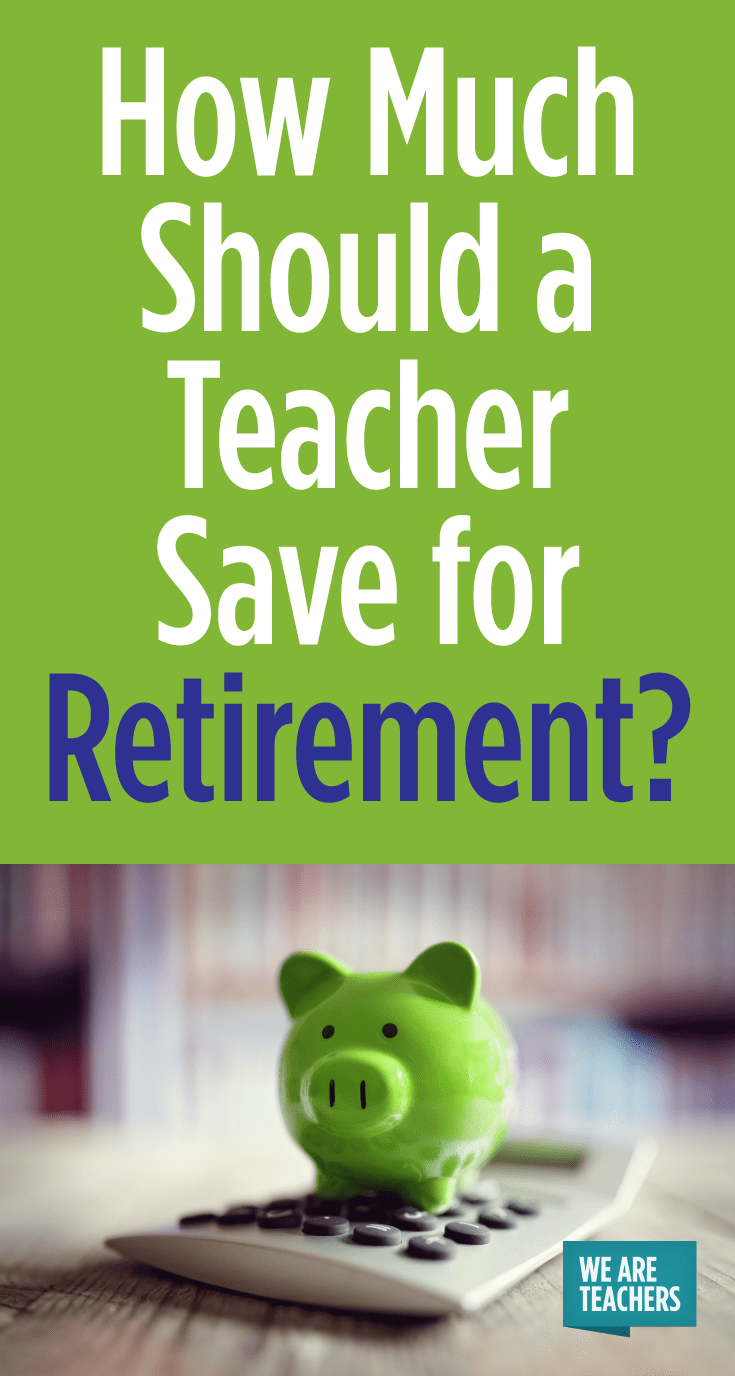If you’ve been wondering “how much should I save for retirement?,” you’re not alone. Teachers have some unique considerations when it comes to retirement savings. Understandably, such a broad question means there is not one definitive answer. Your life stage, marital status, level of savings and expectations for retirement will determine how much you need to save.
Where are you in your career?
Your career stage influences how much you need to save. For example, a teacher in their 20s doesn’t need to save as much as someone in their 50s just getting started with saving.
Let’s say you’re looking to leave teaching at age 62 with a $500,000 balance in your 403(b). If you’re able to generate an 8% annual return, here are the monthly amounts that you need to save:
Age 22: $145/mo.
Age 32: $340/mo.
Age 42: $850/mo.
Age 52: $2,750/mo.
Obviously, the amounts are wildly different, and even go above 403(b) contribution limits in the final scenario. But it shows that starting earlier in your career makes saving for retirement much easier. By waiting until later in your career to save, it becomes harder to reach the amounts you’d like to see.
What are you saving for?
The issue that’s more important to understand than “how much?” is “what for?”. Determining what retirement will look like is important to understanding how much you’ll need to save.
If you are looking for a simple retirement with expenses that will be covered by your pension, then saving additional money might not be necessary. However, if your expenses will not be completely covered by your pension (and Social Security if you’re eligible), then you should be saving to meet this gap.
Where are you saving for retirement?
This is where it starts to get technical—what account you choose to save for your retirement will impact how much you need to save.
If you choose to save to a 403(b), understand that while you’ll be saving on taxes now, you will be paying income taxes on all of the amounts you withdraw later. For someone in a low tax bracket now with the possibility of a higher tax bracket later, this can have an adverse effect. Here’s an example:
Sophie is 25, currently earns $40,000 and wants to remain single. She knows she needs to save for retirement and is leaning towards a 403(b). Due to how her marital status and income affects her tax bracket, she’ll defer approximately 15% in taxes on any amount she contributes to her 403(b). However, she works in Illinois and her pension will be 75% of her average salary over her last four working years.
Based on Sophie’s education, movement on the pay scale, and district pay system, this could mean that her pension is over $92,000 in retirement. Her pension will put her automatically into the 28% tax bracket. She’s saving 15% in taxes now to pay 28% later. It’s possible she should be saving to a Roth 403(b) and pay the taxes now.
What does the bigger picture look like ?
Saving using your own income to achieve you own goals is great when you’re single. But retirement saving in a marriage should be a shared endeavor. Goals should be designed together and then the approach for saving should be designed knowing there could be two incomes, two employer plans and two pensions at play.
Some potential scenarios:
- If your spouse earns a lot more than you, maybe they are saving enough for your family and you might not need to save as much.
- Inheritance coming for either you or your spouse? Then your savings rate might be lower.
- If you have both decided that you have lavish goals for retirement, then you may both need to save aggressively for retirement, at the expense of other goals.
Every family’s scenario is different, making each answer to this question very different. Can you tell why I love my job?!
A short answer to the question
Save 15% of your income. If your pension contributions make up 8% of this savings, then save 7% to a retirement account. If you can afford to, increase that 7% to a higher number year after year.


